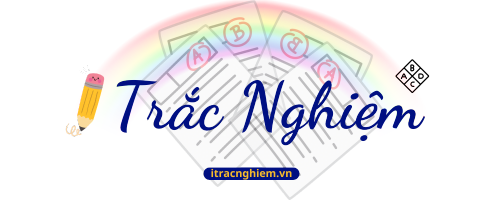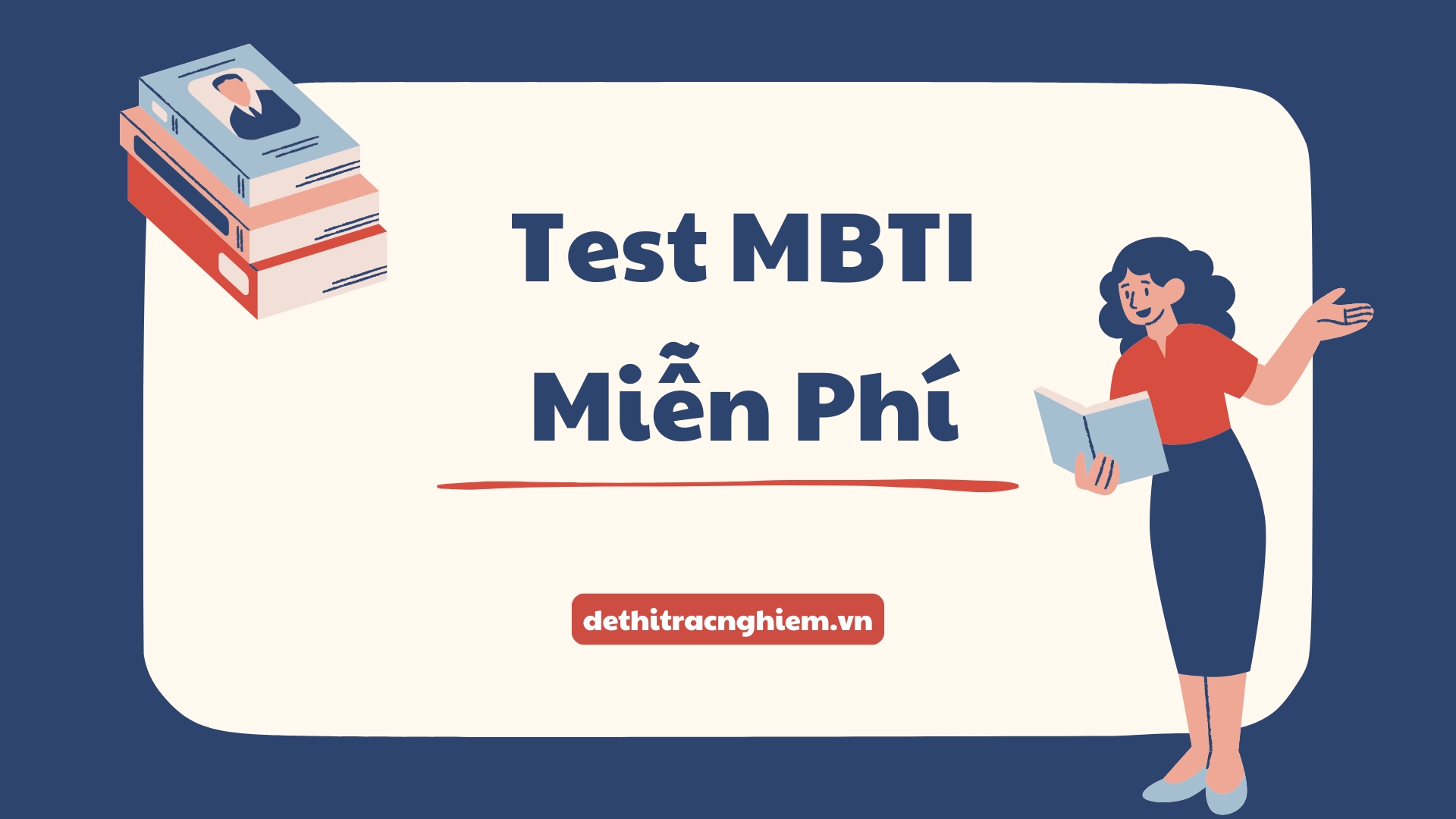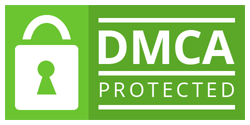Trắc Nghiệm Quản Trị Học Chương 1 Tiếng Anh là đề tham khảo thuộc môn Quản trị học, được xây dựng bằng tiếng Anh để hỗ trợ sinh viên các chương trình đào tạo quốc tế hoặc hệ song ngữ tại Trường Đại học Kinh tế Quốc dân (NEU). Đề được biên soạn bởi ThS. Phạm Thị Minh Tâm – giảng viên Khoa Quản trị Kinh doanh, năm học 2024. Nội dung trọng tâm của chương 1 bao gồm khái niệm về quản trị (management), vai trò và kỹ năng của nhà quản trị (managerial roles and skills), cùng các cấp bậc quản lý trong tổ chức. Toàn bộ câu hỏi được trình bày bằng tiếng Anh theo dạng trắc nghiệm khách quan, giúp sinh viên rèn luyện khả năng hiểu và vận dụng thuật ngữ quản trị trong môi trường học thuật quốc tế.
Trắc Nghiệm Quản Trị Học trên dethitracnghiem.vn là một bộ đề đại học hữu ích dành cho sinh viên chương trình tiếng Anh, đặc biệt là những bạn đang theo học tại các trường có chương trình giảng dạy bằng ngoại ngữ. Bộ đề không chỉ giúp làm quen với cấu trúc bài thi mà còn hỗ trợ cải thiện từ vựng chuyên ngành. Với hệ thống câu hỏi đa dạng, đáp án rõ ràng và giao diện thân thiện, người học có thể chủ động luyện tập, theo dõi tiến độ và chuẩn bị tốt hơn cho các kỳ kiểm tra mang tính học thuật bằng tiếng Anh.
Hãy cùng Dethitracnghiem.vn tìm hiểu về đề thi này và tham gia làm kiểm tra ngay lập tức!
Trắc nghiệm Quản trị học chương 1 tiếng Anh
Câu 1: “Doing the right things,” or completing activities so that organizational goals are attained, is known as:
A. Efficiency.
B. Effectiveness.
C. Productivity.
D. Leading.
Câu 2: The concept of getting the most output from the least amount of inputs is referred to as:
A. Efficiency.
B. Effectiveness.
C. Planning.
D. Profitability.
Câu 3: Which of the four management functions involves setting goals, establishing strategies, and developing plans to coordinate activities?
A. Planning.
B. Organizing.
C. Leading.
D. Controlling.
Câu 4: When a manager determines what tasks are to be done, who is to do them, and how the tasks are to be grouped, they are performing the function of:
A. Planning.
B. Organizing.
C. Leading.
D. Controlling.
Câu 5: A production line supervisor is an example of which level of management?
A. Top manager.
B. Middle manager.
C. First-line manager.
D. Non-managerial employee.
Câu 6: According to Robert L. Katz, which skill is most important for top-level managers?
A. Technical skills.
B. Human skills.
C. Conceptual skills.
D. Communication skills.
Câu 7: The management function that involves motivating subordinates, influencing individuals, and resolving conflicts is:
A. Planning.
B. Organizing.
C. Leading.
D. Controlling.
Câu 8: According to Mintzberg’s managerial roles, when a manager performs symbolic duties like attending a ceremony, they are in the ________ role.
A. Leader.
B. Liaison.
C. Figurehead.
D. Spokesperson.
Câu 9: Which level of management is responsible for making organization-wide decisions and establishing the plans and goals that affect the entire organization?
A. Top managers.
B. Middle managers.
C. First-line managers.
D. Supervisors.
Câu 10: The ability to use specialized knowledge, tools, and techniques of a specific field is referred to as:
A. Technical skills.
B. Human skills.
C. Conceptual skills.
D. Strategic skills.
Câu 11: Monitoring activities to ensure they are being accomplished as planned and correcting any significant deviations is the ________ function.
A. Planning.
B. Organizing.
C. Leading.
D. Controlling.
Câu 12: An organization is best defined as:
A. A group of friends with a common interest.
B. A building where people work.
C. A deliberate arrangement of people to accomplish some specific purpose.
D. Any company that makes a profit.
Câu 13: When a manager deals with an unexpected strike by the employees, they are performing the ________ role, according to Mintzberg.
A. Negotiator.
B. Entrepreneur.
C. Disturbance handler.
D. Resource allocator.
Câu 14: Which of the following skills are important at all levels of management?
A. Technical skills.
B. Human skills.
C. Conceptual skills.
D. Planning skills.
Câu 15: The universality of management concept states that:
A. All managers have the same style.
B. Management is needed in all types and sizes of organizations.
C. Only large corporations need management.
D. There is only one best way to manage.
Câu 16: The primary job of a middle manager is:
A. To supervise non-managerial employees directly.
B. To set the overall strategic direction of the company.
C. To manage the work of first-line managers and translate top management’s goals into specific plans.
D. To perform specialized tasks with no managerial responsibility.
Câu 17: Which of the following is an example of an interpersonal role according to Mintzberg?
A. Monitor.
B. Spokesperson.
C. Leader.
D. Negotiator.
Câu 18: Management is considered an “art” because:
A. It follows strict, provable laws.
B. It requires creativity, intuition, and experience to apply knowledge effectively.
C. It can be learned entirely from a textbook.
D. It relies solely on quantitative data.
Câu 19: The main difference between a manager and a non-managerial employee is that:
A. Managers work longer hours.
B. Managers have a higher level of education.
C. Managers are responsible for coordinating and overseeing the work of other people.
D. Managers have their own office.
Câu 20: The role of a manager who scans the environment for information is the ________ role.
A. Disseminator.
B. Monitor.
C. Spokesperson.
D. Liaison.
Câu 21: Which function of management is considered the “primary” or “foundational” function?
A. Planning.
B. Organizing.
C. Leading.
D. Controlling.
Câu 22: The ________ role involves managers representing the organization at major negotiations.
A. Figurehead.
B. Disturbance handler.
C. Negotiator.
D. Entrepreneur.
Câu 23: The ability to see the organization as a whole and understand the relationships among various subunits is a key part of:
A. Technical skills.
B. Human skills.
C. Conceptual skills.
D. Communication skills.
Câu 24: Which of the following is an example of a decisional role according to Mintzberg?
A. Figurehead.
B. Monitor.
C. Resource allocator.
D. Liaison.
Câu 25: When a manager shares information received from outsiders or from other subordinates with members of the organization, they are performing the ________ role.
A. Monitor.
B. Disseminator.
C. Spokesperson.
D. Leader.
Câu 26: The ultimate goal of management in any organization is to:
A. Maximize profit at all costs.
B. Ensure every employee is happy.
C. Achieve the organization’s goals effectively and efficiently.
D. Follow all rules and regulations strictly.
Câu 27: Management is considered a “science” because:
A. It always provides an exact answer to every problem.
B. It has an organized body of knowledge with principles that can be taught and learned.
C. It requires natural talent that cannot be taught.
D. Its results are always predictable.
Câu 28: Middle managers are often responsible for:
A. Setting long-term strategic goals.
B. Implementing the plans and policies of top managers.
C. Directly supervising the production line.
D. Handling public relations for the company.
Câu 29: The four functions of management (planning, organizing, leading, controlling) are best described as:
A. A sequential process that must be followed in a rigid order.
B. An integrated and continuous cycle of activities.
C. A set of independent activities.
D. Functions that are only important for top managers.
Câu 30: A key characteristic of an organization is that it has:
A. A physical location.
B. A profit motive.
C. A distinct purpose and a deliberate structure.
D. At least 100 employees.




